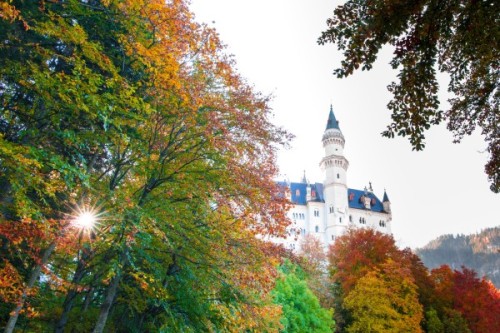As the Eiffel Tower popped in and out of view, I couldn’t stop the knee-jerk reaction to raise my camera and click uncontrollably from the roof of our double-decker tour bus.
Everyone’s been there – that overwhelming moment where you just can’t resist firing a hundred shots without thinking. However, the difference between a snapshot and a potentially money-making photograph is taking a few extra seconds to evaluate the scene, visualize your end result, then compose your image.
What exactly does composing the image mean?
Well, simply put, photographic composition is the act of organizing elements of a scene into a balanced and visually pleasing arrangement.
Much like a roadmap, composition guides your viewer through your image. Without composition, the viewer is lost, left guessing where to take their eyes next.
I could talk all day about the go-to standards of leading lines, rule of thirds, and balance – and if you’re not familiar with these, I urge you to take a look here. The goal here, though, is to punch your skills up to the next level.
Begin with one of the most important elements of every photograph: LIGHT!
It’s critical to take a moment every time you click the shutter to evaluate where the light is coming from, how it’s affecting your subject, and what could make it better for your scene. The strength and direction, as well as the source of light, can add drama to an otherwise mundane image.
Try getting creative by experimenting with silhouettes, sun flares, and starbursts.
The second underutilized element of composition proven to set photographs apart is perspective.
Most snapshots are taken from eye level – meaning the photographer put the camera up to her face and clicked the button. This is fine for scrapbookers, but if you want to make images that stand out with real impact, try bending down, getting up high, looking straight up, or lying on the ground.
The most interesting photographs are often a unique take on something we’ve seen before. When you think perspective, think “move your feet.”
A beautifully-composed photograph not only comprises elements you choose to include and how you arrange them – it’s also about what you exclude. Eliminating distracting objects from your image is essential.
Distracting elements include trashcans, power lines, people, cars, lights, and even colors. I know this sounds like a real no-brainer, but it’s crazy how the excitement you experience can actually blind you to these things – that is until you get home and see those items glaring at you.
So, how do you see things you may have been missing for years? The first step is to take your eyes off the subject and consciously look for anything distracting, and then try to position yourself so they don’t interfere. Next, double-check directly behind your subject for anything that looks like it is “growing out of it” (like a telephone pole that looks as though it’s coming out of someone’s head). Lastly, sweep the edges of your frame for tree branches or anything else poking into your shot.
With these three advanced photo composition techniques, your images (and the payout you receive from them) are sure to improve!






